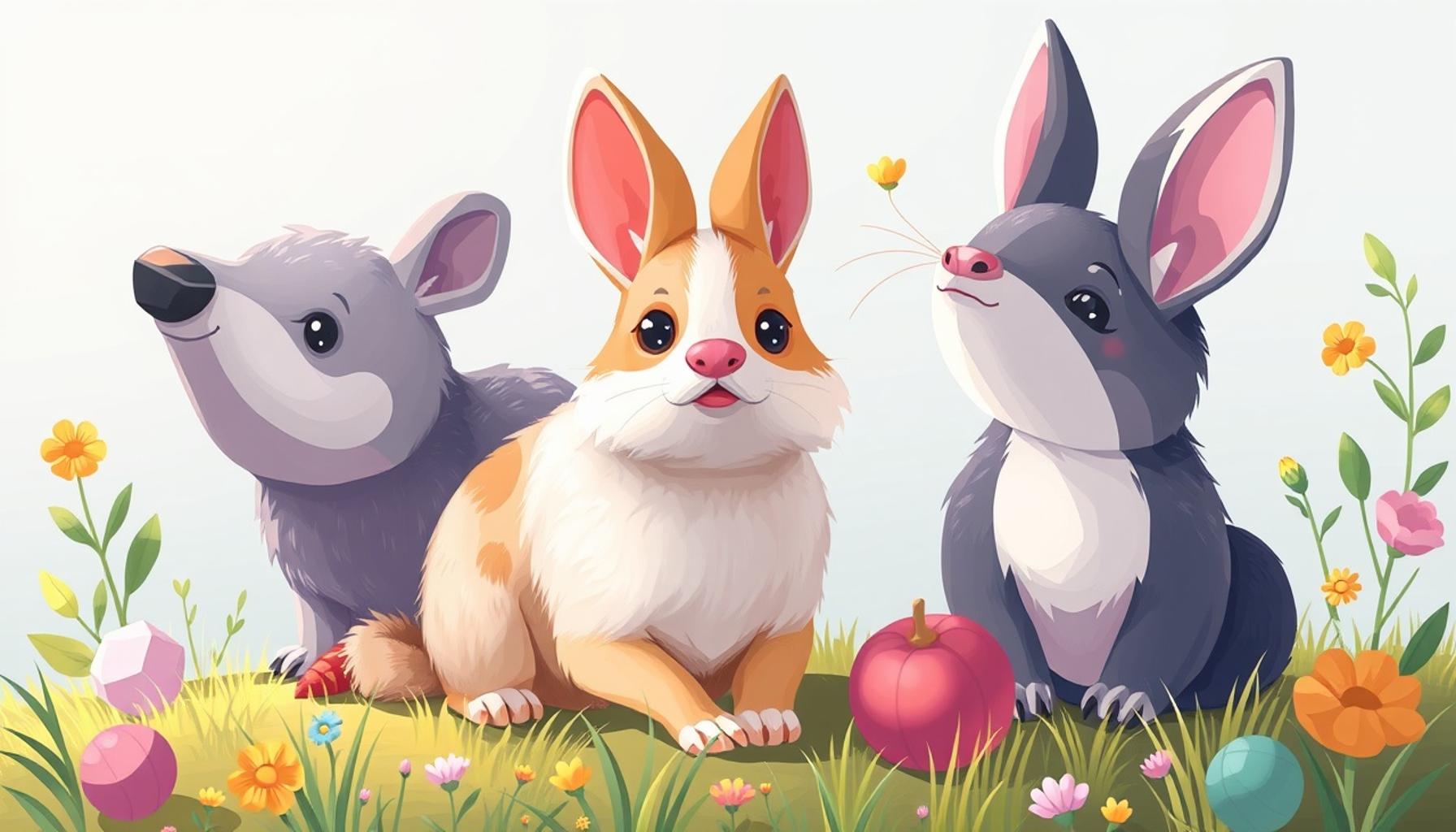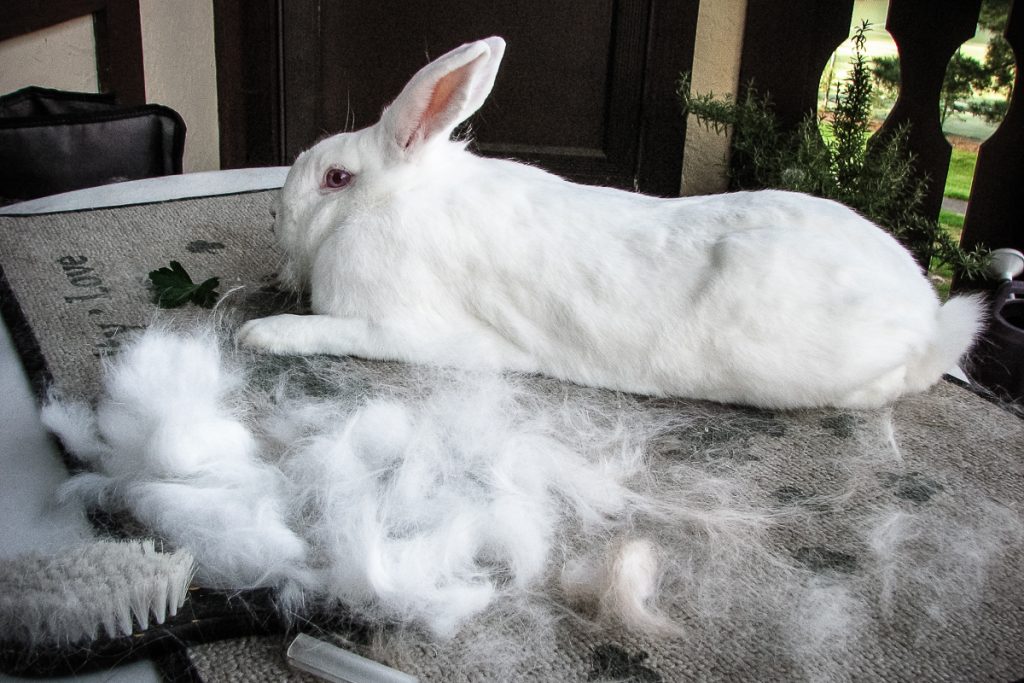Strategies for Understanding and Responding to Rabbit Behavior as Pets

Understanding Your Bunny Buddy
Rabbits are enchanting companions that bring joy and warmth into our homes. However, their behavior often puzzles pet owners, leading to misunderstandings that can affect the bond between rabbit and owner. Learning to interpret these furry friends’ actions is crucial for nurturing a healthy and happy relationship.
Why Understanding Rabbit Behavior is Essential
Understanding rabbit behavior can help you:
- Recognize signs of stress or discomfort: Rabbits, being prey animals, will instinctively hide signs of stress. Observing their behaviors closely allows you to pinpoint what may be making them anxious, whether it’s loud noises or unfamiliar environments.
- Identify their individual personalities: Just like humans, rabbits have unique temperaments. Some may be timid and shy, while others are adventurous and playful. Knowing these traits can help you tailor your interaction methods and create a secure environment for them.
- Enhance overall care and well-being: By understanding what happiness looks like for your rabbit, you can provide stimuli and enrichment that resonate with their preferences, ultimately improving their quality of life.
Each rabbit has a unique way of communicating, utilizing body language and vocalizations. For instance, a relaxed bunny might exhibit a binky—leaping into the air out of sheer happiness. This joyful expression is not just adorable; it serves as a barometer for their happiness. Knowing what to look for will empower you to respond appropriately to their needs.
Common Rabbit Behaviors
To effectively respond to your pet’s needs, familiarize yourself with these common rabbit behaviors:
- Thumping: This behavior serves as a warning signal for potential danger. When your rabbit thumps its hind legs, it’s communicating with other rabbits and alerting them to a possible threat, which can often pass on to you as the owner, prompting vigilance.
- Nesting: If you notice your rabbit gathering hay or bedding in a corner, it may indicate a desire for comfort or a safe space. This instinct stems from their natural behavior in the wild, as they create safe hiding spots for themselves. Providing them with a cozy area can fulfill this need.
- Chewing: Chewing is a natural instinct for rabbits, as it helps them keep their teeth healthy. If your bunny appears to be chewing excessively, it could also signal boredom or anxiety. Ensuring that your rabbit has plenty of safe chew toys and engaging activities will keep them entertained.
By diving deeper into the world of rabbit behavior, pet owners can transform their pet care routine and foster a loving environment. For example, setting aside time each day for play and interaction can strengthen your bond and keep your bunny mentally stimulated. The strategies discussed will equip you with the knowledge to respond to your rabbit’s needs effectively, leading to a richer and more fulfilling relationship for both you and your furry companion.

DIVE DEEPER: Click here to learn why socialization matters
Interpreting Your Rabbit’s Signals
Understanding the intricate world of rabbit behavior is essential for any rabbit owner. These delicate creatures have rich emotional lives and use various forms of body language to communicate their needs and feelings. By honing your skills in recognizing these signals, you can significantly enhance your rabbit’s quality of life and foster a deeper bond with your furry friend. Here are various strategies to help you navigate rabbit behavior effectively:
Observing Body Language
Rabbits’ emotional states are revealed through their specific body postures and movements. By observing these cues, you can become attuned to your rabbit’s moods, which is the first step in promoting their overall well-being:
- Relaxed Ears: Ears pointed up and forward indicate your rabbit is curious and alert, absorbing its surroundings. In contrast, when a rabbit’s ears are pulled back against its head, it may signify relaxation or submissiveness. Tuning into the nuances of their ear position can be a window into their emotional landscape—one ear up and the other down can hint at hesitation or mild annoyance.
- Body Posture: A rabbit lying flat with its legs stretched is a clear sign of comfort and trust in its environment. Conversely, if you observe your rabbit crouched down with a tense body, it is likely feeling threatened or insecure. Recognizing these postures can provide a useful gauge for assessing your rabbit’s immediate feelings.
- Tail Movements: A lively, wagging tail is often an indication of joy or excitement, particularly during playtime or exploration. On the other hand, a tucked tail usually signals fear, discomfort, or anxiety. By familiarizing yourself with your pet’s tail signals, you will become adept at gauging their overall mood.
Engaging with Play Behavior
Facilitating playtime is integral to your rabbit’s happiness and mental health. Interactive play not only boosts their mood but also satisfies their instinctual behaviors. Here are some fun and engaging activities to consider:
- Obstacle Courses: Create a simple obstacle course using common household items. Old boxes, tunnels, or even safe household furniture can provide a stimulating environment. Such courses allow your rabbit to exercise its natural curiosity and agility, transforming your living space into an adventure haven.
- Interactive Toys: Look for toys that challenge your rabbit’s intellect, such as puzzle feeders or chew toys that dispense treats. These toys not only occupy their time but also stimulate their minds, which is crucial for preventing boredom-induced behavioral issues.
- Social Interaction: Spend quiet moments on the floor at your rabbit’s level. Let them come to you at their own pace, which helps build trust. Gentle, respectful petting and intentional play are vital to reinforcing your bond. This casual interaction mimics how they would interact with their peers in the wild.
Incorporating these strategies helps deepen your understanding of your rabbit’s behavior while creating a more fulfilling experience for both of you. Additionally, be observant of your rabbit’s reactions to various stimuli. They may possess specific preferences or dislikes, influencing their behavior. Being attuned to these signals equips you to respond appropriately to your rabbit’s needs, paving the way for a happier and healthier home environment. Ultimately, developing this insight not only enriches your rabbit’s life but also contributes to the rewarding experience of pet ownership.
| Category | Details |
|---|---|
| Understanding Body Language | Rabbits communicate through subtle body movements. For instance, a relaxed bunny may lie down with its front paws stretched out, while a tense rabbit may thump their hind legs. Recognizing these signs is vital for maintaining harmony in your home. |
| Providing Proper Environment | Creating a safe space with plenty of room to hop and explore is crucial. Bunny-proofing your home can help in preventing accidents. Safe toys and hiding spots can reduce stress and provide stimulation. |
Understanding a rabbit’s individual personality is equally essential. Each rabbit may have varying needs, from social interaction to personal space. For example, some rabbits enjoy cuddling while others prefer to remain independent. Observing and adapting to these preferences can lead to a more fulfilling bond between you and your pet.Moreover, incorporating playtime and enrichment activities into your rabbit’s daily routine can enhance their quality of life. Engagement through activities like hide-and-seek with treats or obstacle courses can promote both mental and physical well-being. Recognizing signs of stress or discomfort is equally critical. When rabbits feel threatened, they often display behaviors such as hiding or aggression. Being attentive to these signals allows pet owners to address issues promptly, fostering a trusting and healthy relationship with their furry companions.Overall, implementing these strategies can not only improve your rabbit’s happiness but also enhance your understanding of their unique behaviors, leading to a deeply rewarding pet ownership experience.
DISCOVER MORE: Click here to uncover the connection between pet behavior and mental health
Creating a Safe and Enriching Environment
To effectively understand and respond to rabbit behavior, it’s crucial to provide an environment that supports their natural instincts and promotes a sense of security. Rabbits are prey animals at heart, meaning their surroundings play a significant role in how they express their behaviors and emotions. Below are essential strategies to consider for building an enriching environment that caters to your rabbit’s needs:
Safe Housing Setup
Your rabbit’s living space should be a sanctuary. A well-designed habitat not only ensures safety but also encourages healthy exploration and play:
- Spacious Housing: Ensure that your rabbit’s enclosure is sufficiently spacious for them to hop around, stretch out, and play. A good rule of thumb is to provide at least 4-square feet of living space per rabbit, but the larger, the better. Consider housing options that allow for vertical space, such as multi-tiered setups, which can enhance exploration.
- Safe Materials: Use rabbit-safe materials when constructing or modifying your rabbit’s space. Avoid sharp or dangerous objects that may pose a risk. Natural wooden rabbit huts, cardboard boxes for hiding, and high-quality hay can create a comfortable environment without toxic exposure.
- Hideaways: Rabbits love to hide and feel secure in their habitats. Incorporate tunnels or small shelters within their space to give them the opportunity to retreat when they desire peace and quiet.
Encouraging Natural Behaviors
Understanding that certain behaviors arise from your rabbit’s instincts allows you to provide opportunities for them to engage naturally:
- Litter Training: Rabbits are inherently clean animals, making litter training a feasible option. Use a large, shallow litter box filled with hay or rabbit-safe litter, and place it in a corner of their enclosure. This not only keeps their space tidy but also turns cleaning into an aspect of their routine.
- Foraging Activities: Encourage foraging by hiding treats around their space. This mimics their natural instinct to search for food in the wild. Use items like cardboard boxes stuffed with hay or special foraging toys that dispense treats, stimulating their minds and providing physical activity.
- Exercise Opportunities: Regular exercise promotes both physical health and emotional well-being. Allow your rabbit daily time outside of their enclosure in a safe, supervised area where they can run, hop, and explore freely. Rotating the play area or introducing new toys can keep things fresh and exciting.
Understanding Behavioral Changes
Changes in your rabbit’s behavior can signal emotional or physical issues. Being attentive to these changes will enable you to respond effectively:
- Altered Eating Habits: A sudden decrease in appetite or a preference for certain foods can indicate underlying health problems. Monitor their eating habits closely and consult with a veterinarian if you notice a significant change.
- Withdrawal Behaviors: If your usually social rabbit becomes withdrawn, it may be feeling stressed or unwell. Monitoring your pet’s interactions and activity levels can provide vital clues to their health and happiness.
- Nuisance Behaviors: Behavioral issues, such as excessive chewing or digging, can arise from boredom or lack of stimulation. If your rabbit starts displaying these behaviors, reevaluate their environment, and increase the variety of toys and activities available.
By fostering a safe and enriching environment, you empower your rabbit to express itself freely while minimizing behaviors stemming from anxiety or frustration. With these strategies in mind, you are well on your way to building a lasting and positive connection with your rabbit, ultimately enhancing its quality of life through your attentive care and understanding.
LEARN MORE: Click here for insights on your pet’s nutrition
Conclusion
In navigating the complexities of rabbit behavior, pet owners have the opportunity to foster a deeper connection with their furry companions. Understanding the instinctual behaviors of rabbits, recognizing their need for a safe and enriching environment, and being attentive to the subtle changes in their behavior are pivotal strategies for enhancing their quality of life. By providing a spacious, stimulating habitat filled with natural materials, hiding spots, and opportunities for play and exploration, owners can encourage the expression of their rabbit’s playful and curious nature.
Moreover, the significance of monitoring behavioral shifts cannot be overstated. Early detection of changes in eating habits, social interactions, or patterns of activity can provide vital insights into a rabbit’s well-being and spark proactive engagement with veterinarians when necessary. With these tools at their disposal, rabbit owners can not only interpret their pet’s moods and needs more effectively but also engage in a rewarding journey of companionship.
Ultimately, the art of understanding and responding to rabbit behavior is a continual learning experience. Each rabbit is unique, and being attuned to their individual quirks and preferences will not only enhance your relationship but also create a harmonious living environment. Embrace the challenges and joys that come with being a rabbit owner, and remember that your efforts play a crucial role in the happiness and health of your beloved pet.



